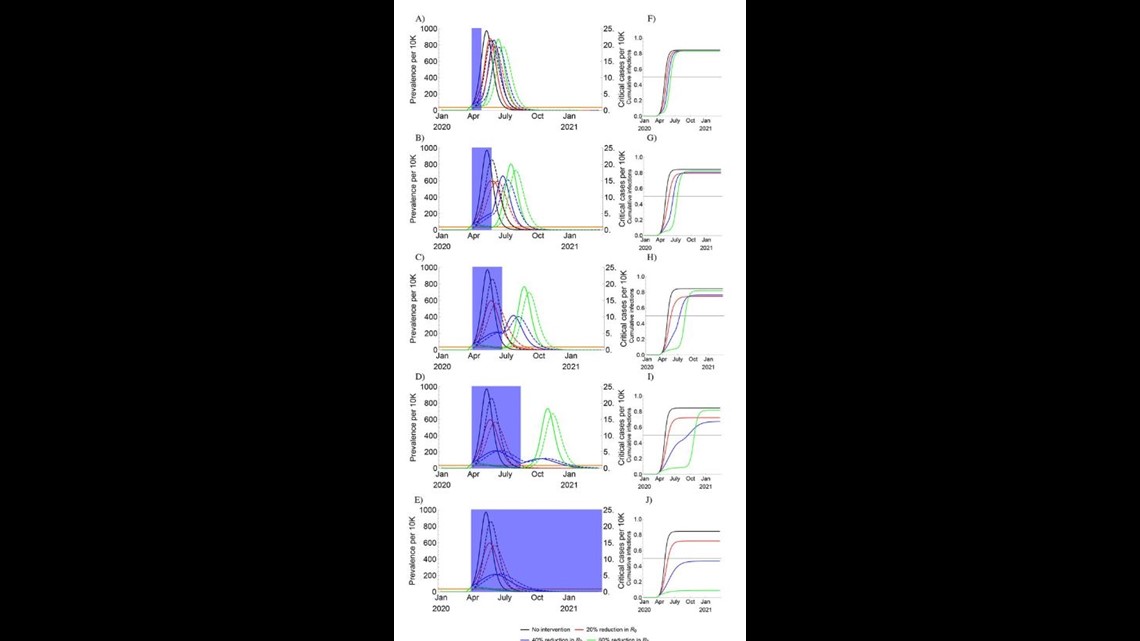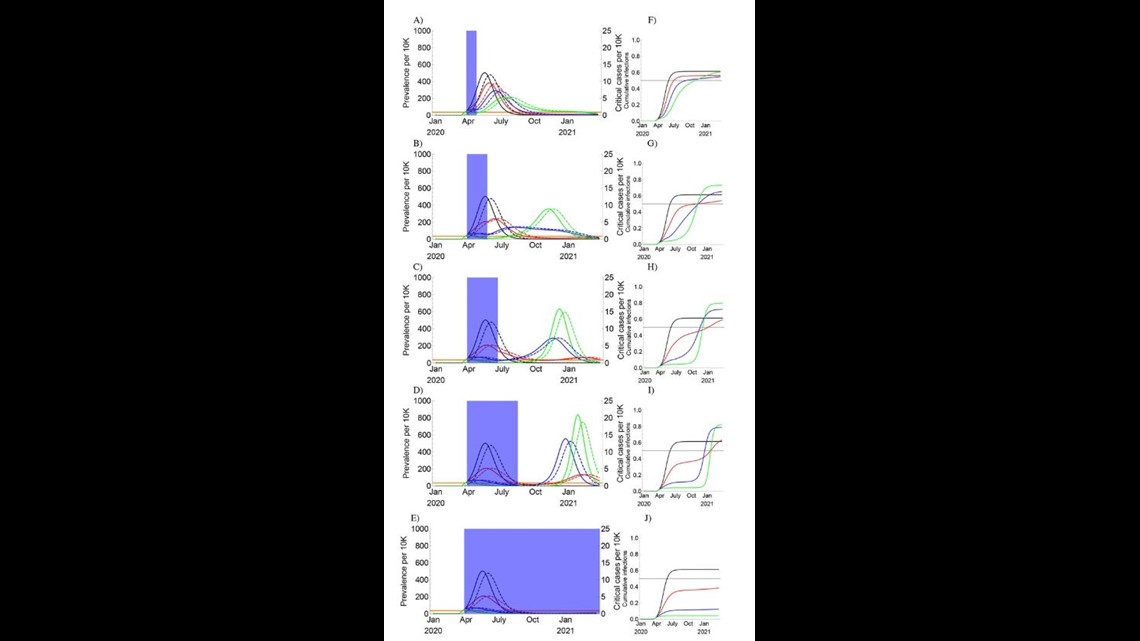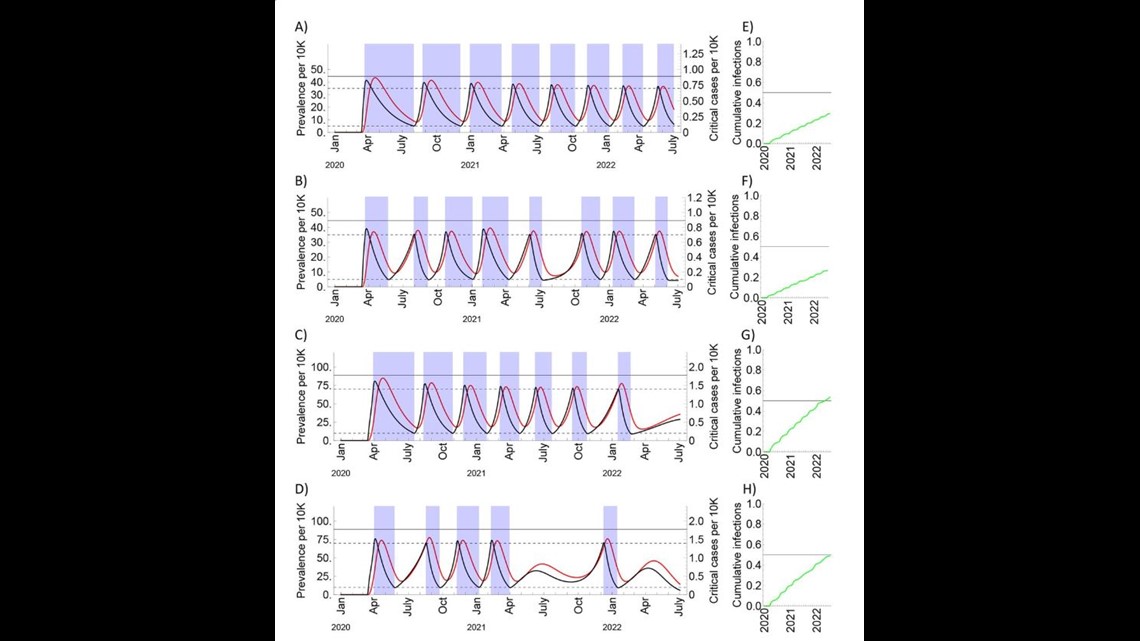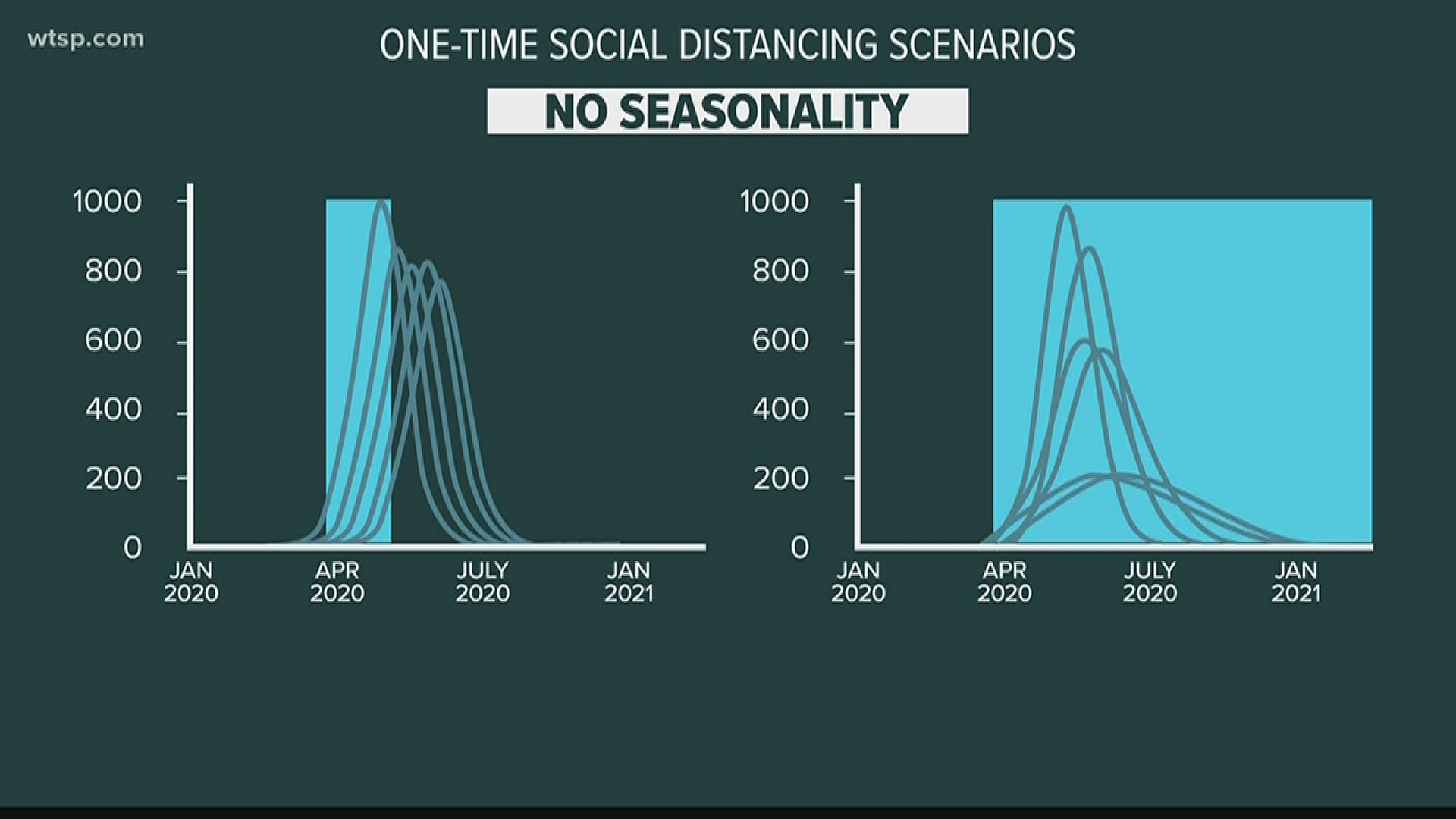CAMBRIDGE, Mass. — We might be in for years of self-isolation if we don’t take certain actions, according to researchers from the Harvard T.H. Chan School of Public Health.
They looked at some models of how the pandemic might play out and published new projections Tuesday, April 14 in the journal Science. They’re saying we should social distance intermittently through 2022.
Their findings directly contradict research by the White House, which suggests the pandemic may stop this summer.
Florida Surgeon General Scott Rivkees on the other hand is saying something else. He says, we’re living the new normal.
"As long as we are going to have COVID-19 in the environment, and this is a tough virus, we're going to have to practice these measures so that we are all protected,” Rivkees said.
He wants social distancing to remain in place until a vaccine is readily available.
"Probably a year if not longer is what some individuals have talked about," Rivkees said.
It’s evident both Florida Governor Ron DeSantis and President Donald Trump don’t want to close the economy that long, but public health experts say a quick return to normal life could be dangerous.
The Harvard researchers say they are aware that such prolonged distancing, even if intermittent, would likely have "profoundly negative economic, social, and educational consequences."
Now, let’s dive deeper into the published study. They looked at how seasonal effects influence the spread of SARS-CoV-2. Now you may be thinking, what in the word is SARS-CoV-2? That’s the virus behind this pandemic.
The study says:
"Intermittent distancing may be required into 2022 unless critical care capacity is increased substantially, or a treatment or vaccine becomes available.”
"Even in the event of apparent elimination, SARS-CoV-2 surveillance should be maintained since a resurgence in contagion could be possible as late as 2024."
The projections also indicate that the virus would come back quickly once social distancing restrictions were lifted.
Reading through their paper can get a little confusing when you start seeing all these charts and diagrams. So, let’s break them down.
There are different strains of the virus. The one we know all too well is COVID-19, caused by the severe acute respiratory syndrome coronavirus 2, aka SARS-CoV-2. The two others the study references are HCoV-OC43 and HCoV-HKU1.
The Harvard researchers predict that if SARS-CoV-2 behaves similarly to OC43 and HKU1, then summer will significantly slow its spread, but not enough to stop it.
This diagram simulates the prevalence of COVID-19 infections and critical COVID-19 cases following a period of social distancing starting at two weeks, then four weeks, eight weeks, 12 weeks, 20 weeks and indefinitely.


According to this data, the report says, “of the temporary distancing scenarios, long-term (20-week), moderately effective (20%-40%) social distancing yields the smallest overall peak and total outbreak size.”
The next big thing they look at is the duration of immunity. Marc Lipsitch, an epidemiologist and one of the study’s authors, said in a press conference that “reasonable guesses are that on the short end there might be partial protection for a year or close to it, and on the long end, it might be several years of good protection. But it’s really speculative at this point.”


This diagram they drew up, shows immunity that lasts about a year would result in annual outbreaks of COVID-19. That’s assuming there’s no social distancing or any other interventions. On the other hand, they believe to get less frequent outbreaks; we need longer immunity results.
The assumption is that social distancing reduces the virus’s transmissibility by 60% and that summertime reduces it by 40%. That leads them to believe, in order to maintain the number of cases requiring critical care at a rate below what hospitals can currently handle, the U.S. would need to enact social distancing in spurts.


The study says we need to continue social distancing through the middle of May, then reinstate it for the month of August and again in late October, through the end of the year. But it doesn’t stop there. It’s recommended we bring social distancing back from February to April 2021, then in June 2021, and for comparable periods in 2022 and beyond.
With so many unknowns during this pandemic and constantly changing variables, it’s hard to know the right move. The researchers considered dozens of different scenarios in their paper and in all of them Lipsitch said, “several rounds of social distancing will be required to get us to herd immunity in the absence of a vaccine.”
- You could get a $2,000 per month stimulus check under proposed bill
- Publix offers extended shopping hours for first responders, hospital staff
- Should Florida schools stay closed? More than 25,000 people who signed this petition say ‘yes’
- Support Tampa Bay: Which local businesses are open right now?
- The IRS is now depositing coronavirus stimulus checks | Here's what you need to know
- Hotlines, websites offer the latest on COVID-19
- Don't post your senior pictures on Facebook
FREE 10NEWS APP:
►Stay In the Know! Sign up now for the Brightside Blend Newsletter



